Recently Ashok Leyland Ltd turned 70. It chose to celebrate the occasion by depicting the evolution of the company through an exhibition of its products and landmarks along with the parallel high points of the city, the state, and the nation. From the first product, the Austin car assembled by Ashok Motors, to the sophisticated Stallion for defence, the seven-decade journey was imaginatively showcased at the Chennai Trade Centre. Kudos to Siddharth Ganeriwala of Aura for collecting and displaying such a wonderful memorabilia.
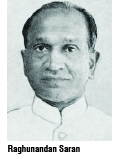
Established in 1948 as Ashok Motors, the promoter, Raghunandan Saran, took bold to enter into a collaboration with British Leyland Motor Corporation to produce commercial vehicles. Through these decades AL maintained its lead as a major producer of buses for the numerous transport corporations spread across the nation as also medium and heavy commercial vehicles for truck operators and infrastructure projects. British Leyland was then among the technology leaders. The policy of indigenisation was seized by a number of entrepreneurs, to set up ancillary industries to supply components and other services.
A 56 year long association
My relations with AL began in 1962 when I launched the transport monthly Mobile. The inaugural issue had a report on AL and soon I also presented a detailed interview with then Managing Director, AEL Collins.
My bond with AL thickened in 1967. I was keen to visit Germany and Britain to look at the auto industry in those countries enjoying the post-war boom. Despite a large number of companies with British collaboration operating in Chennai, I couldn’t make much progress in getting the required contacts. My friend H B Stanford, Technical Director, Amalgamations Ltd, wrote to his friend at British Leyland requesting him to facilitate my visit to the Leyland Works. The friend was even more generous: “it won’t be worthwhile to visit UK for looking at just one plant,” he reasoned and took up the matter with the Society of Motor Manufacturers & Traders Ltd (SMMT), the association of auto producers of UK. SMMT agreed to provide me rich facilities like stay in star hotels, local transportation and visits to a dozen plants over two-weeks. These included the works of Rootes Motors, British Motor Corporation, Leyland Motors, Standard Triumph, Dunlop, Joseph Lucas, York Trailer, Edbro Tipper, J Payen and Tube Investments. SMMT told me that I was the first non–European journalist extended such a facility!
I also got similar facilities to spend another couple of weeks in West Germany to look closely at several large engineering units and Daimler Benz, Volkswagen, VBO…
When British Leyland was on top gear…
In terms of engineering excellence and operations, British Leyland was then in top gear. I also remember the contrast: while most of the plants in Germany were bombed and flattened, they were built afresh as greenfield factories with efficient and elegant assembly lines; Britain was making do with old historical buildings with their chimneys and other relics and attempting marginal improvements. A senior British executive commented: “those b……s made the most of defeat: they lost the war, but set up modern industrial units way ahead of us!”
In the initial decades run by the British managers, the focus in Ashok Leyland was on indigenisation, developing vendors and the market for medium commercial vehicles establishing a vast dealer network, ensuring the reliability of the vehicles and attending to repairs in quick time. In the initial years, there was competition from Telco (now Tata Motors) which had financial and technical collaboration with Daimler Benz, Hindustan Motors and Premier Automobiles. The latter two phased out commercial vehicle manufacture; competition was essentially between the Tatas and AL.
Indian businesses were impacted by the severe foreign exchange crunch through the next two decades that stunted growth. Control of AL was still in British hands. With the British industry severely troubled by labour problems, there was declining interest in meeting the increasing funding needs of AL.
 Then came Shahaney…
Then came Shahaney…
A major turning point came in 1977. George Fernandes as Industry Minister mandated a 40 per cent limit to foreign shareholding for most foreign companies. (Remember, IBM and Coca-Cola quit India refusing to fall in line?). R J Shahaney, who headed with distinction Jessop & Co in Kolkata, took charge as Managing Director. Another illustrious leader from Delhi, Mantosh Sondhi, was the non-executive chairman who took care of the several clearances needed at Delhi. This duo also assembled rich talent from the public sector: S V S Raghavan, Joy Joseph, V R Pappu, K S Ramakrishnan… joined AL. R J Shahaney also groomed brilliant young recruits like R Jagannathan, Ananthanarayanan, S Nagarajan… These strengthened finance and administration under the brilliant chartered accountant, R Seshasayee, who joined AL a year ahead moving from Hindlever.
Soon one noticed plans for massive expansion with a vast geographical spread. Along with sprucing up the old plant at Ennore, AL planned to set up new units at Hosur (TN), Bhandara (MR) and Alwar (RJ).
The commercial vehicle industry had its cycles of boom and slump. Thus the ambitious plans took long to take shape. The quickest expansion was witnessed at Hosur. A significant development was the collaboration with Hino Motors, Japan for producing engines with much higher power. For the habitual over-loading practice of most of the Indian truck operators, these engines helped AL build a reputation for reliable haulage.
Take over by the Hindujas

The professionals at the helm preferred the Hindujas. This is understandable for the freedom they would continue to exercise with the new owners not breathing down their necks when contrasted with the family-style management of a Rahul Bajaj or Sivasailam. They advised the British counterparts accordingly. Thus the management passed into the hands of the Hindujas in 1987 along with Iveco-Fiat of Italy (which had a 10 per cent share in equity).
I was present at the first press conference addressed by S P Hinduja soon after the Hindujas took over AL. I remember S P Hinduja expressing his expectations on IVECO fully extending its technological expertise that will enable AL to produce vehicles of standards comparable to those in G8 countries.
Another illustrious suitor for this share was MAN of Germany. On a visit to the MAN works in Germany later, I learnt from a senior executive their disappointment in missing out on the deal; he rued that with their familiarity with Indian road and load conditions his company would have given much better technology and support. (MAN had provided vehicle production technology for defence. I remember the olive green Shaktiman trucks of Defence criss-crossing the country in the 1960s).
The collaboration with IVECO did not last long. There were issues on transfer of technology sought by AL. The company had better rapport with Japanese Hino Motors. Later AL also opted to focus on company’s own R&D. Post-2000 investments made in R&D enabled the company to introduce continuously improved products.
In the IE June 1990 issue we carried a cover story titled AL dares to dream again; and what a dream! The Shahaney-Seshasayee team was deeply impressed and ordered for 85,000 reprints for distribution to the shareholders, policymakers, vendors, dealers….
When we pointed to lack of R&D efforts…
- With our long association with AL spreading over five decades we pointed to the need for AL to step up investments in R&D and release newer models with more sophisticated facilities. We referred to a few major deficiencies that needed improvement:
- The high level of the footboard with the first step at a height of around 3’ from ground that made it tough, especially for women and the old, to climb and to get down.
- Buses continued to be built on chassis designed for goods. eg a 7.5 tonne chassis not needed for a bus to carry loads of around 3 tonnes.
- Engine located by the side of the driver impacting severely on the driver’s health.
- Absence of automatic transmission that caused enormous to strain through frequent clutch and gear changes. We suggested exploring the possibility of knocking out the top gear for high speeds (why design for 120 kmph or more with the speed limited to 40 kmph in cities?).
- The low R&D spend, of around 0.17 per cent, on sales, contrasted with 6-10 per cent by auto manufacturers in developed countries.
A rare response…
Seshasayee, along with Director–R&D Natarajan and head of Corporate Communications, Thomas Abraham, visited Economist House, dealt with the points raised by IE and referred to the several changes introduced. The sensitivity and response to the critical report raised my esteem of this business leader and his company.
Massive step up in R&D spend…
IE was happy to witness a massive step up in R&D spend. Over 1000 highly qualified and dedicated scientists and engineers, many drafted from large US auto companies and elsewhere, strengthened R&D. New designs like low-floor buses, increased electronics and new models were released in quick succession and there was focus on the emerging area of defence production.
Under Seshasayee as Managing Director and later Executive Vice Chairman, AL made full use of the opportunities available in the liberal environment. The market was expanding and the industry enjoyed boom in frequent cycles. The opening up of the investments also witnessed the entry of large multinationals. There was the threat of increased competition from new entrants like the German giant Daimler as also opportunities for collaborations.
Seshasayee inducted prized managers like Vinod Dasari and invited specialists like Dr V Sumantran. A spate of new collaborations was entered into – three joint ventures with Nissan; a joint venture with John Deere for earthmoving equipment and a few acquisitions abroad in Germany and UK. Manufacturing activities expanded at Bangladesh, Sri Lanka, UAE, etc.,
Vinod Dasari graduated from the McCormick School of Engineering and the Kellogg School of Management. Prior to joining AL, Dasari was Joint Managing Director at Cummins and President of Global Railroad Business at Timken. He has had the benefit of working with Shahaney, Seshasayee and Sumantran. The depressed market conditions post- 2008 and the sector in the downturn of a business cycle demanded changes in strategy.
The new collaborations proved a drain on AL’s resources. The Hindujas, Dasari and their team decided to stick to knitting and the company terminated many of the JVs. Today the focus is sharp on the core business of commercial vehicles and expanding production for defence. With the new policy of the government focusing on a large step up in defence production capabilities and thrust on exports, AL is busy building on the base laid for defence vehicles and equipment.
For several decades AL was largely known only in the south. This has changed; with manufacturing activities spread to Maharashtra, Rajasthan and Uttarkhand and a vastly expanded dealer network, in recent times the north has replaced the south as the largest market for AL vehicles. Sales more than trebled in a decade and exports are recording handsome increases.
There is a strong focus on customer service and customer orientation. These took care of the incomes and welfare of drivers, suppliers, customers, channel partners and community so well-described in the 70-year commemoration volume, Aapki Jeet . Hamari Jeet.
Of the seven decades of AL’s life I have had the opportunity to report on AL’s 56 years. The evolution was exciting making the company grow among reputed manufacturers of commercial vehicles across the world. The Hindujas have redeemed their promise to produce vehicles that can be exported to G8 countries.
Stellar Performance…

Sale of 174,873 units in 2017-18, (67 per cent over 104,902 vehicles in 2014-15). Record revenue of Rs.26,525 crore (nearly double the revenue of 14,486 crore in 2014-15) profit of Rs.1563 crore (nearly five times the profit of Rs. 335 crore in 2014-15).
Shareholders Funds have increased from Rs. 5118.69 crore in 2014-15 to Rs. 7164.80 crore in 2017-18. Such spectacular growth has helped improve the debt: equity ratio from 0.65 per cent to 0.14 per cent. The return on capital has recorded a more than four-fold increase from 9.1 per cent 38.7 per cent over these four years. Dheeraj would not have asked for more!
From the steep drop in performance in 2013-14, when net profit dropped to a low of just Rs.29.28 crore, the recovery has been spectacular. In line with the automobile industry, Leyland has been riding on a boom. Dheeraj Hinduja pointed to such growth built on the string of new products introduced in continuous stream with 17 of these introduced through last year.
The company has been expanding its overseas operations resulting in export growth of 38 per cent. The overseas operations of Bangladesh, Sri Lanka, UAE, UK and Germany have been registering sizeable growth. The company enjoys a 30 per cent market share for its commercial vehicles. The focus on technology is at the base of this record. The step up in R&D investments and rapid move towards digitisation and electric vehicles need special mention.
AL has a long experience producing vehicles for defence. With the impressive plans of the defence ministry to step up massively indigenous production and export of defence products, AL is well-positioned to sieze the emerging opportunities. Dasari sees the future of the industry undergoing radical changes through new technologies, more digital and customer support that would ensure deeper partnerships.
Large multinationals in the US and Europe depict their evolution through permanent museums. Amalgamations set up one such in Anna Salai. A Ramakrishna built such a museum for L&T Constructions. AL could set up such a museum in the Chennai Metro.
 EXCERPTS FROM THE BOOK – AAP KI JEET. HAMARI JEET
EXCERPTS FROM THE BOOK – AAP KI JEET. HAMARI JEET

G P Hinduja – Co-Chairman, Hinduja Group
The advent of economic liberalisation in India in the 1990s accelerated the growth of Ashok Leyland. After acquisition we did not change the Board or the members of the senior management. Our confidence in their professionalism continues.
R J Shahaney – Chairman Emeritus
During my memorable term as MD/Chairman (1978-2012), the ownership of the company transited from British Leyland to the JV of the Hinduja Group and Iveco-Fiat. AL strode on professional and progressive lines with financial and technical support of the Hindujas. Focus on upgrading the performance and load carrying capability of AL vehicles resulted in the development and indigenisation of a new series of engines. It strengthened the company’s ability to service India’s transportation industry.
 R Seshasayee – former Executive Vice Chairman & Managing Director
R Seshasayee – former Executive Vice Chairman & Managing Director
Aapki Jeet. Hamari Jeet is the life spirit of AL that has sustained the very existence of the organisation.
AL’s ‘Stallion’, the logistics vehicle, was just inducted into the Army. The Kargil war demanded scaling up of supplies. The vehicles were put under severe stress in hostile terrain at 5000 metres with a completely untrained army of drivers and totally unfamiliar mechanics. There were catastrophic vehicle failures. We threw in all the service support that was necessary. Our stallions toiled round the clock. India won the war. That was our victory too!
Namakkal had always been a veritable fortress for AL vehicles with 80-90 percent market share. The drivers’ training school in Namakkal, a pioneering effort from a vehicle manufacturer, provided livelihood to the youth of the community with better driving skills. The economic and social success of the town is a measure of AL’s own success!
 Vinod Dasari, Managing Director
Vinod Dasari, Managing Director
From starting as a small company in Tamil Nadu to getting ready for the electric vehicles, we stay focused on the path of leveraging the opportunities in the future.
The story of a lady driver
Sumati, from a poor farmer’s family, who had a broken marriage, joined AL’s Driver Training Institute in Namakkal to learn driving heavy vehicles. She started to drive a mini-bus and later worked as a bus driver of Chennai Metropolitan bus on temporary basis. Soon she got a job to drive farm equipment for the government. When farmers needed tractors, the government lends them and her job was to reach the tractors to the farmers.
“The driving skill taught me to hold my head up with pride and to respect myself.
AL changed my life by supporting me,” says Sumati.
Suppliers
The Wabco-Ashok Leyland partnership brought about a change in the supply-chain relationship. Together the companies worked to press into action many transformative technologies to eliminate wastage and ensure on-time delivery. Wabco implemented a vendor management system in their Ennore plant and AL, on their part, ensured that Wabco had a 100 per cent market share of their equipment.
Baba Kalyani of Bharat Forge remembered their relationship of over 50 years with AL that guided them on several aspects of manufactu-
ring to meet perfectly the latter’s requirements. AL helped Bharat Forge through not only inputs but also gave them leads for joint ventures.
Kalyani said that over the years whenever AL posed the question ‘How much can you supply?’ to Bharat Forge, their instant reply had been, ‘However much you require?’ This led to a relationship of trust between the two companies that further deepened into respect.
AL was an early customer of Rane Group. Later, the old personal-business relationship paradigm morphed into a more performance-based relationship. Vinod Dasari was the driving force responsible for achieving this transition.
The TVS- Ashok Leyland relationship is a bond to cherish. It took a new turn when Sundaram Clayton started supplying air brakes for Leyland trucks and buses instead of the hydro brakes that were in use. On the advice of Ram Santhanam of Sundaram Motors, AL entered the north Indian markets too. The relationship is based on the shared value of empathy for the customer.
Customers
K P Natarajan who founded KPN Travels, chose a reliable Ashok Leyland vehicle even though he had to go to Chittoor to get the chassis and had to pay a premium for it. He was willing to go the distance because he had unshakable faith in AL vehicles. The reasons to choose AL vehicles for his company were that there was hardly any vibration from the engine when it was running and the great resale value.
Parveen Travels has a 40-year-long relationship with AL. Afzal reminiscences AL providing a spare engine when one of his fleet of buses had an engine failure in the 1990s and also helped in fitting it. The support we received from AL that day remains fresh in my memory, said Afzal.
AL’s CSR initiatives
The Road to School programme has touched the lives of 19,700 children in 153 schools around AL’s plants in Hosur, Ennore, Namakkal…

Alert keeps the parents informed of the real-time status of their wards and the buses they are in.
Rajagopalan, an employee of AL, provides tuitions for children from economically backward families around his house, buys notebooks for them and also take temple cleaning efforts in rural areas. He founded Sri Ramakrishna Sevashram with five boys who had no family support. With the contributions of AL employees and their friends the Ashram takes care of education of over 50 children until they turn 18, after which they are placed in companies in and around Hosur.

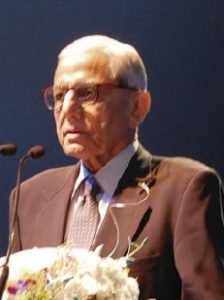 Then came Shahaney…
Then came Shahaney…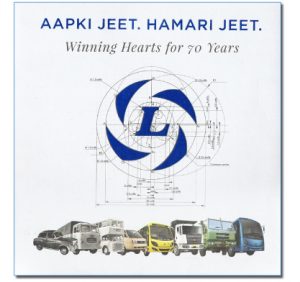 EXCERPTS FROM THE BOOK – AAP KI JEET. HAMARI JEET
EXCERPTS FROM THE BOOK – AAP KI JEET. HAMARI JEET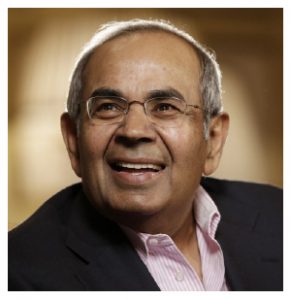
 R Seshasayee – former Executive Vice Chairman & Managing Director
R Seshasayee – former Executive Vice Chairman & Managing Director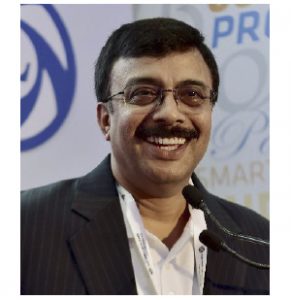 Vinod Dasari, Managing Director
Vinod Dasari, Managing Director